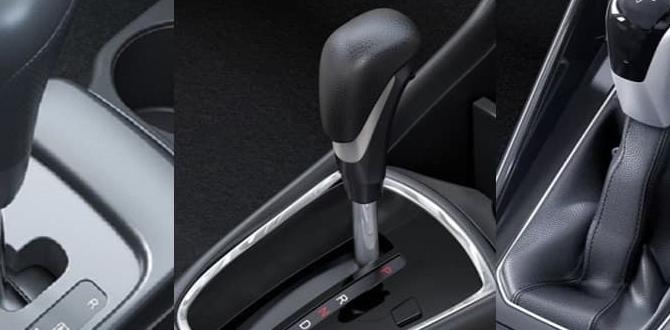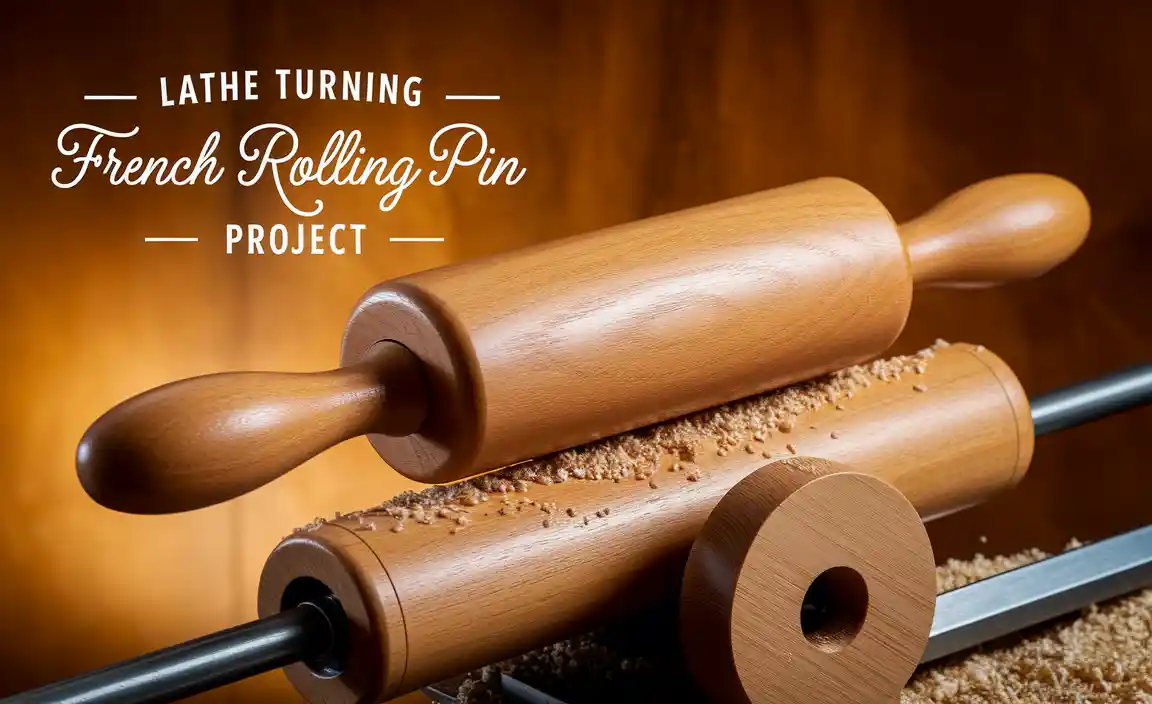Carbide end mills that are extra long can be your secret weapon for precisely machining aluminum, especially when you need to control chatter and deflection. This guide shows you how to use them to get clean, accurate cuts every time.
Ever struggled with your milling machine vibrating when cutting aluminum? It’s a common problem, especially when trying to make those delicate cuts. This “chatter” or “deflection” can ruin your workpiece and make your machining frustrating. But what if I told you a specific type of tool could make a huge difference? We’re talking about extra-long carbide end mills designed for aluminum. They’re not just longer; they’re engineered to handle aluminum’s unique properties, giving you smoother, more precise results. Stick around, and I’ll show you exactly how to use these tools for a genius way to control aluminum deflection.
Understanding Aluminum Milling Challenges
Aluminum is a fantastic material for machining. It’s lightweight, strong, and relatively easy to cut. However, it also has a tendency to be “gummy” and can build up on cutting tools. This buildup, known as “birdnesting,” combined with aluminum’s low melting point, can lead to sticky chips that clog flutes and cause tool deflection. Deflection happens when the cutting forces push the tool away from its intended path. For beginners, this often looks like wavy or rough surfaces, inaccurate dimensions, and, worst of all, broken tools or damaged workpieces.
The goal when milling aluminum is to create clean chips that evacuate easily. This is where the right tool and technique come into play. Traditional end mills might work for general tasks, but for intricate or deep cuts in aluminum, you often need something specialized.
The Extra-Long Carbide End Mill Advantage
Why choose an extra-long carbide end mill for aluminum, and how does it help with deflection? It boils down to design and material properties.
Carbide Vs. HSS
First, let’s talk about carbide. Carbide end mills are generally harder and more rigid than High-Speed Steel (HSS) tools. This inherent rigidity is crucial for resisting deflection. While HSS tools can be excellent, they tend to be more flexible. For aluminum, carbide’s heat resistance is also a big plus, as aluminum can generate significant heat during cutting.
The “Extra-Long” Factor
The “extra-long” aspect might seem counterintuitive. Wouldn’t a longer tool be more prone to deflection due to its increased reach? Yes, it can be, but it’s all about how it’s used and the specific design for aluminum. Extra-long end mills are designed with specific flute geometries to:
- Improved Chip Evacuation: They often have fewer, deeper flutes and a highly polished surface. This allows those gummy aluminum chips to slide out easily, preventing buildup.
- Reduced Cutting Forces: Optimized cutting edge geometry can actually reduce the force needed to cut the material, minimizing deflection.
- Deeper Reach: The primary benefit of being “extra-long” is obvious: the ability to cut deeper into a workpiece or reach into recessed areas without needing multiple setups or specialized tooling. This is invaluable for creating complex parts or features.
When you combine the rigidity of carbide with a design optimized for aluminum and the added reach, you get a tool that, when used correctly, can actually control deflection better in specific scenarios. It’s designed to cut efficiently without the tool bending significantly under load.
Choosing the Right Extra-Long Carbide End Mill for Aluminum
Not all extra-long end mills are created equal, especially when it comes to aluminum. Here’s what to look for:
Material: Solid Carbide
As mentioned, solid carbide is the go-to for its hardness, rigidity, and heat resistance. For aluminum, you want high-quality carbide.
Flute Count
For aluminum, a lower flute count is generally better. This is because:
- 2 Flutes: Excellent for aluminum. The wider gullets (the space between flutes) provide maximum room for chips to evacuate. This is crucial for preventing that sticky aluminum buildup.
- 3 Flutes: Can also work well, offering a bit more stability than 2 flutes, but chip evacuation can be slightly more challenging.
- 4 Flutes or More: Generally avoided for aluminum in most situations. With more flutes, the chip load per flute becomes smaller, and the gullets are shallower, making it much harder for chips to escape, leading to clogging and poor surface finish.
Coating
While not always strictly necessary for aluminum, certain coatings can further enhance performance:
- Uncoated: Often the best choice for aluminum. The polished flutes of a good uncoated carbide end mill provide a slick surface for chips to slide off. Over-coating can sometimes increase friction or stickiness with aluminum.
- ZrN (Zirconium Nitride): A good general-purpose coating that offers excellent lubricity and can help with heat reduction.
- TiAlN (Titanium Aluminum Nitride): While great for steel, TiAlN can sometimes cause aluminum to adhere more readily to the tool.
For aluminum, an uncoated, highly polished carbide end mill is usually the top recommendation.
Geometry
Look for end mills specifically designed for aluminum. These often feature:
- High Radial Rake Angle: This steeper angle helps to shear the material cleanly, reducing cutting forces.
- Polished Flutes: Very important for aluminum to prevent chip adhesion.
- Corner Radius/Chamfer: A small corner radius or a light chamfer can help prevent chipping of the cutting edge and improve surface finish.
Shank Diameter and Length
Here’s where the “extra long” comes in. You know you need:
- Shank Diameter: For the keyword example, we’re looking at a 1/8 inch (3.175mm) or 10mm shank. Ensure the shank fits your collet or tool holder securely.
- Reach/Overall Length: This is the “extra long” part. How much reach do you need? Measure your part and your machine’s capabilities. Be realistic; excessive length without proper support increases deflection.
Helix Angle
For aluminum, a higher helix angle (often 30-45 degrees) is frequently recommended. This steeper angle also aids in chip evacuation and provides a smoother cutting action.
When to Use an Extra-Long End Mill for Aluminum
Extra-long end mills are particularly useful in specific machining scenarios:
- Deep Pocketing: When you need to mill a pocket that is deeper than a standard end mill can reach in one go.
- Profile Milling with High Aspect Ratio: Cutting long, slender features or outer profiles where the depth of cut is significant relative to the tool diameter.
- Interference Fits: Machining slots or holes that require very precise dimensions.
- Machining in Recessed Areas: Reaching into tight spots on a workpiece.
However, it’s not a one-size-fits-all solution. For shallow cuts or general face milling, a standard length end mill might be perfectly adequate and even more rigid.
Step-by-Step: Deflection Control with Extra-Long End Mills
Achieving genius deflection control isn’t just about the tool; it’s about the technique. Here’s how to get the most out of your extra-long carbide end mill when milling aluminum:
1. Machine Setup is Key
A solid setup is the foundation for any successful machining operation. This is even more critical when dealing with longer tools.
- Rigid Workholding: Ensure your workpiece is clamped down extremely securely. Any movement here will be amplified. Use vise stops, clamps, or fixtures that provide maximum support.
- Secure Tool Holder: Use a high-quality collet or tool holder. A well-balanced tool holder is essential for high-speed operations to minimize vibration.
- Tool Length Projection: Minimize the amount of the end mill that is sticking out of the tool holder. The less overhang, the less deflection. Only use the extra length you absolutely need.
2. Understand Your Machine’s Capabilities
Know your machine’s rigidity and spindle power. A small desktop CNC might struggle with the forces a longer tool can impart, even if it’s cutting aluminum. Larger, more robust machines will handle it better.
3. Calculate Cutting Parameters (Speeds & Feeds)
This is HUGE for preventing deflection and chip buildup. Incorrect speeds and feeds are the leading causes of problems.
Spindle Speed (RPM)
This is determined by the material (aluminum), the tool material (carbide), and the tool diameter. A good starting point for aluminum with carbide is often:
- Surface Speed (SFM): Roughly 200-600 SFM (Surface Feet per Minute).
- Calculation: RPM = (SFM 3.82) / Diameter (inches)
For example, for a 1/8″ (0.125″) end mill, at 300 SFM:
RPM = (300 3.82) / 0.125 = 9168 RPM.
For a 10mm end mill (approx 0.394 inches) at 200 SFM:
RPM = (200 3.82) / 0.394 = 1939 RPM.
Always start conservatively and listen to your machine.
Feed Rate (IPM or mm/min)
This is just as critical as RPM. It determines how fast the tool moves through the material. The feed rate is directly related to the “chip load” – the thickness of the chip being removed by each cutting edge.
- Chip Load (CL): For aluminum and carbide, a chip load of 0.0005″ to 0.002″ per tooth is a common starting range for smaller diameter end mills. For a 1/8″ 2-flute end mill, try a chip load of around 0.001″.
- Calculation: Feed Rate (IPM) = RPM Number of Flutes Chip Load (inches)
Using the 1/8″ example at 9168 RPM with 2 flutes and a 0.001″ chip load:
Feed Rate = 9168 2 0.001 = 18.3 IPM.
Key Takeaway: If you start hearing chattering or see rough surfaces, your feed rate might be too low or too high. Too low means rubbing and heat; too high means excessive force and potential tool breakage.
External Resource: For more detailed calculations and starting points, consult resources like the Machining Doctor’s Feed Rate Calculator. While it’s a commercial site, its calculators and explanations are very helpful for understanding the principles.
4. Optimize Your Cutting Strategy
How the tool path is generated significantly impacts deflection.
Climb Milling vs. Conventional Milling
For aluminum, especially when using longer tools, climb milling is often preferred. In climb milling, the cutter rotates in the same direction as its feed path, meaning the cutting edge starts at the top of the material and moves downward.
- Benefits of Climb Milling for Aluminum & Long End Mills:
- Reduces cutting forces.
- Creates a thinner chip at the start of the cut, preventing buildup.
- Can result in a better surface finish.
- Downsides: Requires a backlash-free or robust CNC machine. If your machine has backlash in the lead screws, conventional milling might be safer to prevent the tool from being forced into areas it shouldn’t be.
Conventional milling, where the cutter rotates against the feed path, is safer for machines with backlash but typically generates higher cutting forces and can lead to chip buildup. For the absolute best finish and lowest deflection with an extra-long aluminum end mill, explore climb milling if your machine allows.
Stepover and Depth of Cut
This is where you leverage the “extra-long” benefit without inviting excessive deflection.
- Depth of Cut (DOC): Start conservatively. For a long end mill, don’t try to remove as much material vertically as you would with a short one. Typically, aim for a DOC that is a fraction of the tool’s diameter, maybe 0.25x to 0.5x diameter, or even less if you’re pushing the reach.
- Stepover (SO): This is the amount the end mill moves sideways with each pass. For finishing passes, a small stepover (e.g., 10-20% of the tool diameter) yields the best surface finish. For roughing, you can increase this, but not so much that you overload the tool or the machine.
Example Scenario: Pocketing Aluminum
Let’s say you need to mill an aluminum pocket that’s 1.5 inches deep using a 1/4 inch extra-long end mill.
- Tool: 1/4″ 2-flute, extra-long carbide end mill for aluminum.
- Material: 6061 Aluminum.
- Machine: A reasonably rigid desktop CNC.
- Parameters (Starting Point):
- RPM: ~4000 RPM (based on ~300 SFM for 1/4″)
- Chip Load: 0.0015″ per tooth
- Feed Rate: 4000 RPM 2 flutes * 0.0015″ = 12 IPM.
- Depth of Cut (DOC): Divide the 1.5″ total depth into smaller passes. Let’s say 0.25″ DOC per pass.
- Stepover (SO): For roughing, maybe 0.1″ (40% of diameter).
- Strategy: Climb milling if possible.
Refinement: You would then gradually increase the DOC or SO if the machine is handling it well and the chip load is being maintained cleanly. Conversely, if you hear chatter or see poor chip formation, you might need to reduce DOC, SO, or carefully adjust RPM/feed rate.
5. Chip Management is Crucial
Aluminum chips love to stick. Poor chip evacuation leads to recutting chips, tool wear, and poor surface finish.
- Air Blast or Mist: Use compressed air directed at the cutting zone to blow chips away, or a mist coolant system. This is vital for aluminum.
- Breaks in Cuts: Sometimes, programming “peck” drilling cycles or retracting the tool occasionally during a deep pocket to clear chips can be beneficial.
- Ensure Flutes are Clean: Periodically check your tool. If you see aluminum buildup, stop the machine, clean the tool, and re-evaluate your speeds/feeds and chip evacuation strategy.
6. Listen and Learn
Your ears are great tools! Pay attention to the sound of the cut.
- Smooth humming sound: Ideal.
- Screeching or high-pitched whine: Often means the feed rate is too high or the tool is rubbing.
- Deep rumbling or chattering: Can indicate deflection, too deep a cut, insufficient feed rate, or workpiece/tool rigidity issues.
Troubleshooting Common Issues
Even with the right tool, problems can arise. Here’s how to fix them:
Issue: Chatter/Vibration
- Cause: Too aggressive a cut (DOC/SO), incorrect feed rate, tool deflection, workpiece rigidity, spindle runout, worn tool.
- Solution:
- Reduce DOC and/or SO.
- Increase feed rate slightly if it’s too low, or decrease if too high.
- Ensure tool holder and spindle are clean and rigid.
- Use a shorter tool if possible or support the workpiece better.
- Slow down RPM slightly.
Issue: Poor Surface Finish (Rough or Wavy)
- Cause: Chatter, inadequate chip evacuation, tool wear, incorrect feed rate, improper tool path.
- Solution:
- Reduce DOC/SO.
- Ensure correct feed rate and RPM for chip load.
- Improve chip evacuation (






